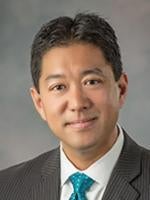On May 7, 2014, the Ohio Supreme Court issued an opinion continuing to clarify when temporary total disability compensation in an Ohio workers’ compensation claim is warranted for an injured worker who has retired. In State ex rel. Honda of America Manufacturing, Inc. v. Industrial Commission of Ohio, et al., Slip Opinion No. 2014-Ohio-1894, the Supreme Court continued the trend of finding that if the retirement was involuntary, then the injured worker is entitled to temporary total benefits even if the employee did not have a loss of earnings.
In State ex rel, Lackey v. Indus. Comm. 129 Ohio St.3d 119, the Ohio Supreme Court addressed an injured worker’s request for post-retirement temporary total disability compensation following knee surgery. The court noted that eligibility for temporary total compensation depended on whether the “separation from the employment was injury-induced.” If retirement is related to the injury, then the injured worker does not have to obtain other employment before seeking temporary total disability compensation.
In State ex. rel. Corman v. Allied Holdings, Inc., 132 Ohio St.3d 202, the court clarified that an injured worker cannot foreclose the possibility of other employment by abandoning the workforce via voluntary retirement, or they will forfeit their ability to obtain this compensation. Ultimately, the question comes down to whether the retirement was voluntary or involuntary.
In this case, the employee was injured while working, and his claim was allowed for contusion and tendonitis of the right wrist, along with other related conditions. He received temporary total disability compensation various times from his injury date until a hearing officer at the Ohio Industrial Commission concluded the allowed conditions in the claim reached maximum medical improvement. The injured worker was offered vocational-rehabilitation services, but he declined to participate. The injured worker then received long-term disability benefits until the insurance carrier determined that claimant was capable of gainful employment outside of the current employer. Since there was no immediate position available with the current employer, the injured worker retired.
A year later, the employee underwent surgery for a condition allowed in the claim and applied for temporary total disability compensation. The Industrial Commission awarded this compensation, and relied on the injured worker’s testimony that he retired because of his industrial injury, and although he wanted to return to work, his injury prevented him from doing so. The Industrial Commission concluded that the injured worker did not voluntarily retire or abandon the workforce. The employer’s main position was that the injured worker must sustain an economic loss to be eligible for temporary total compensation.
The Supreme Court did not find persuasive the argument that there should be an economic loss to be entitled to compensation.
In summary, determining whether temporary total disability compensation is warranted for an injured worker who has retired falls solely on whether the retirement was voluntary or involuntary. Whether the injured worker has sustained a loss of earnings is irrelevant. The court has also upheld the trend that if an injured worker can show there is a causal connection between the retirement and the industrial injury; it will be found that the retirement was involuntary. This decision also highlights the benefits of settlement of a workers’ compensation claim even after a person has retired. Had this claim settled, it would have closed and the injured worker would not have been entitled to the surgery or temporary total disability compensation. Employers should also assure that any information regarding the reason for retirement is well documented as it may be needed to combat future requests for compensation.
It should be noted that this was a 4-3 decision, with a strong dissent and two of the justices concurring in opinion only. Because of the split decision and strong dissent, it is anticipated that this will be an issue that will arise again.






 i
i


